
June, which is both National Homeownership Month and National Healthy Homes Month, provides an opportunity to assess the state’s housing supply, particularly those homes that lack critical facilities or are in significant disrepair. Despite increased attention at the state and national level[i] regarding the connection between housing quality and health, many North Carolinians continue to live in households without adequate facilities, according to recent data from the U.S. Census Bureau’s American Community Survey (ACS).
These data[ii] found more than12,000 households in North Carolina lack complete plumbing, more than 24,500 households lack complete kitchen facilities and about 46,500 households lack adequate telephone service.[iii] While these numbers have remained consistent over the past 5 years[iv], comparisons between renter- and owner-occupied households show stark differences.
Figure 1: Comparison of number of households lacking facilities between 2016 and 2021
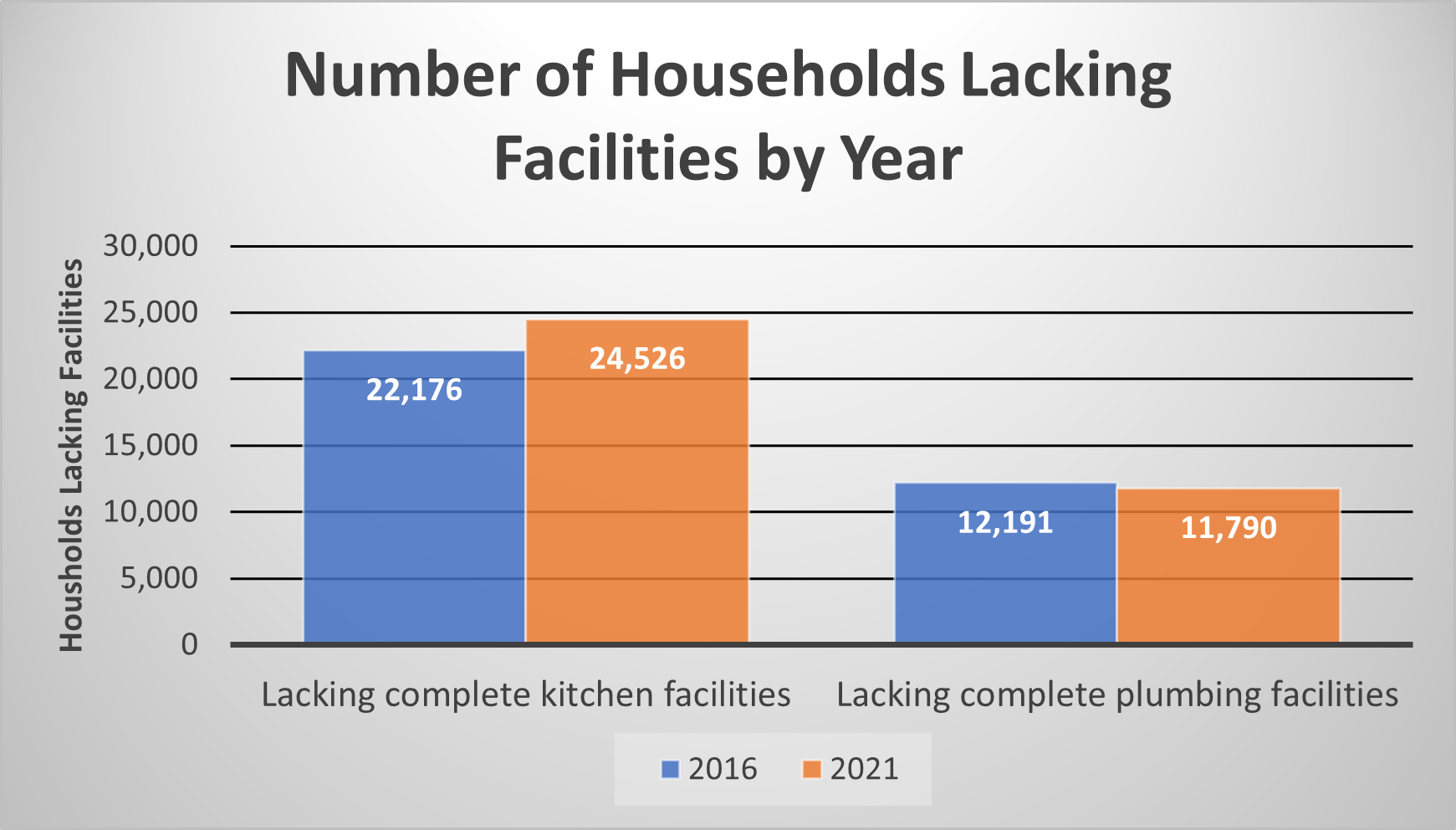
Figure 2: Comparison of the percentage of renter- and owner-occupied households lacking facilities
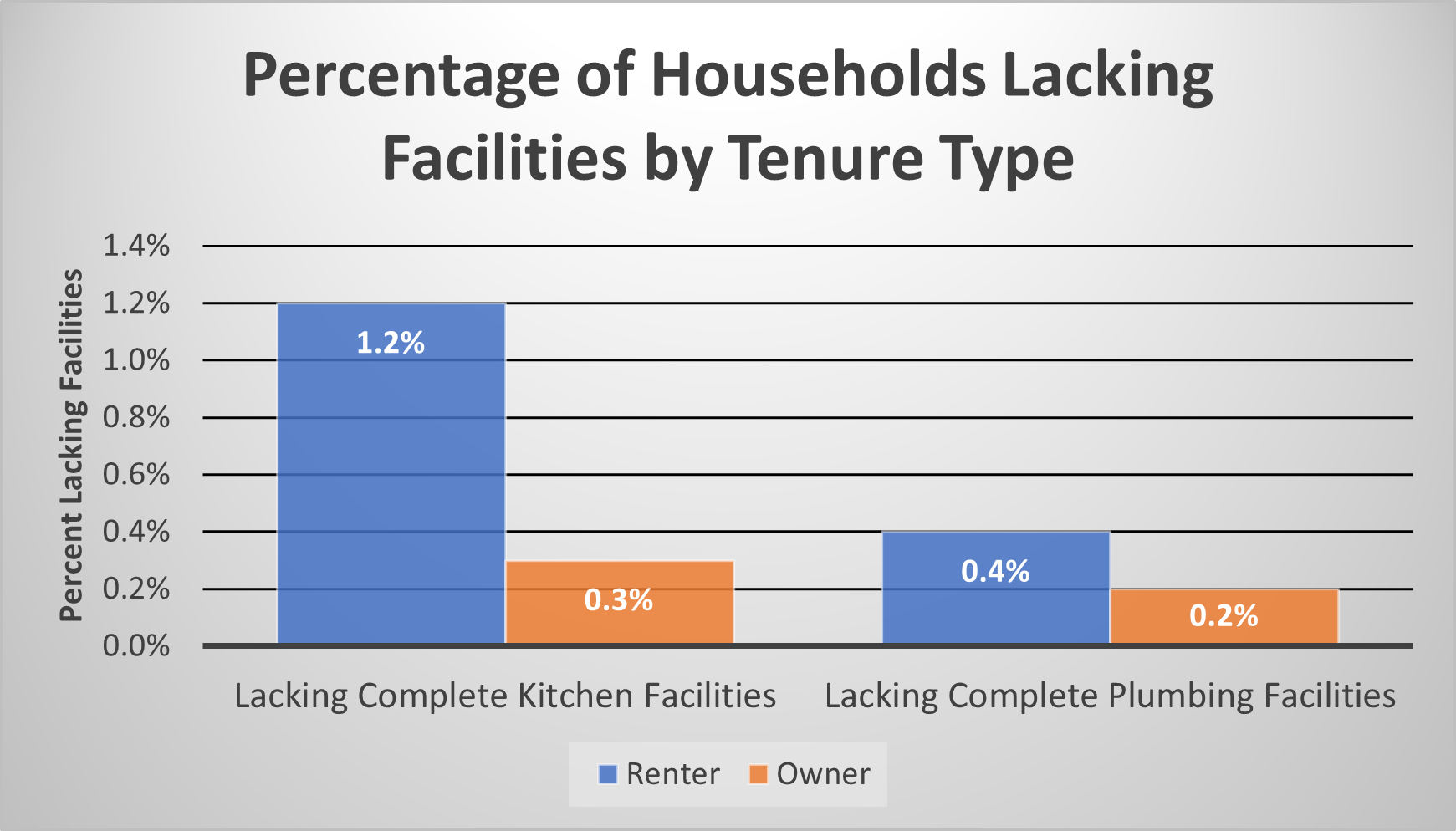
Overall, owner-occupied households are more likely than renter-occupied households to live in a home that includes complete plumbing, kitchen facilities or telephone service. Renter households are almost 70% more likely to live in a unit lacking complete plumbing than their owner-occupied counterparts and almost four times as likely to live in a unit lacking complete kitchen facilities.[v] Similarly, renters are about two and a half times more likely to lack telephone service. This gap further widens for those aged 65 years or older. Renter households in this age group are four times more likely to lack telephone service.[vi] While owner-occupied households are more likely to have complete plumbing, because there are more owner-occupied households than renter-occupied households, the raw number of occupied households lacking facilities do not follow the same trends. Moreover, there are more owner-occupied households than renter-occupied households that lack complete plumbing facilities.[vii]
Figure 3: Comparison of the number of renter- and owner-occupied households lacking facilities
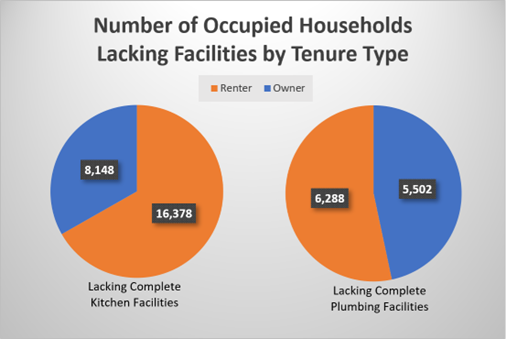
Discrepancies also exist when comparing rural and urban areas. Notably, occupied households in rural areas are significantly more likely to lack complete plumbing or telephone service when compared to occupied households in urban areas; however, this pattern does not hold true when looking at kitchen facilities. The percentages are more uniform and trend in the opposite direction with a higher percentage of occupied urban households lacking complete kitchen facilities than rural households.[viii]
Figures 4 & 5: Comparison of percentage of occupied households between rural and urban areas lacking complete plumbing facilities, complete kitchen facilities or telephone service. North Carolina statewide percentages lacking complete plumbing facilities, complete kitchen facilities or telephone service.
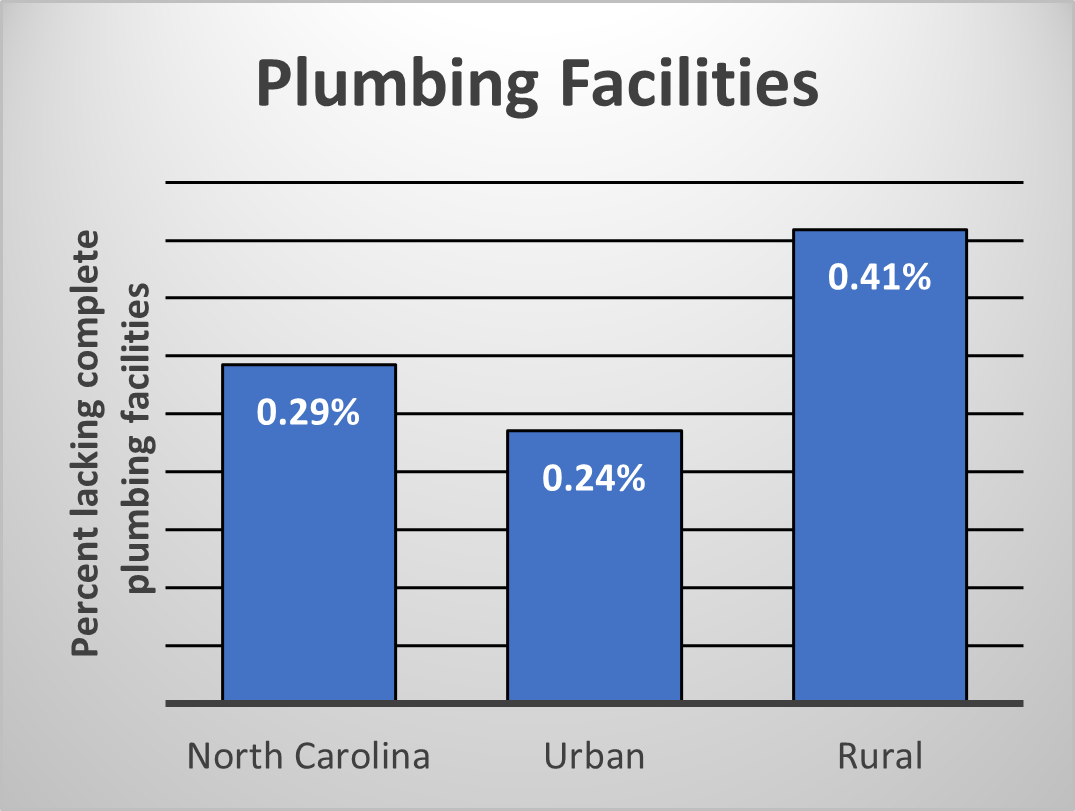
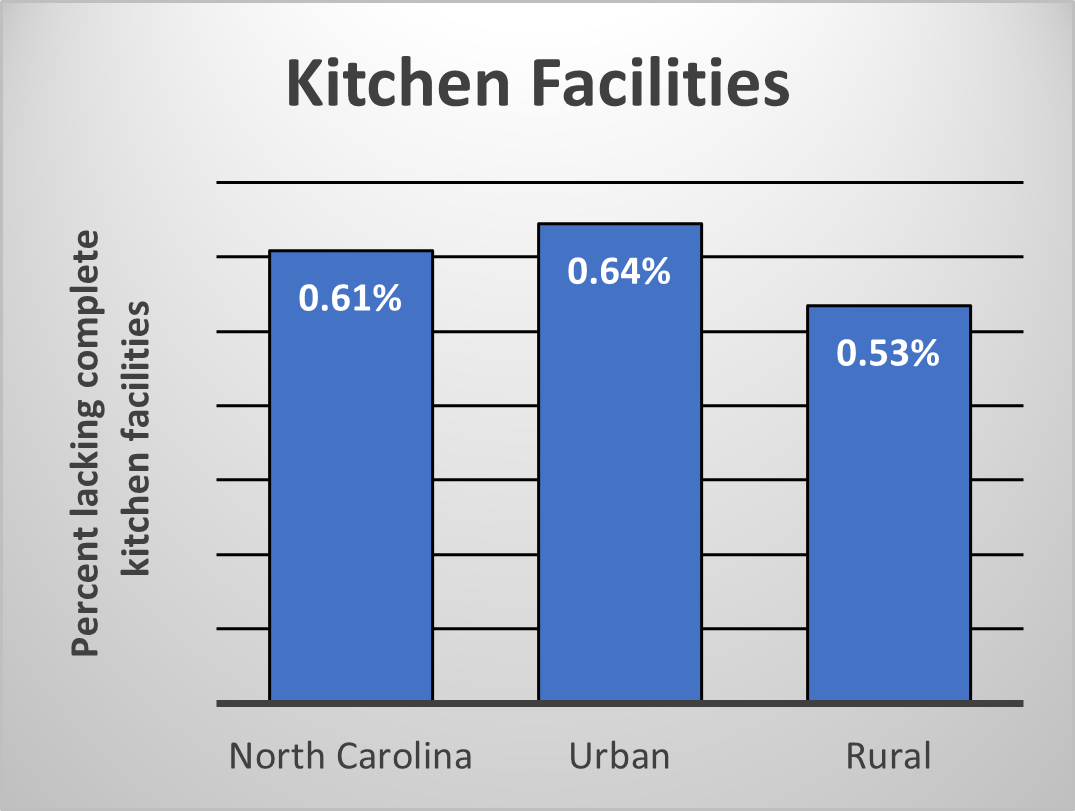
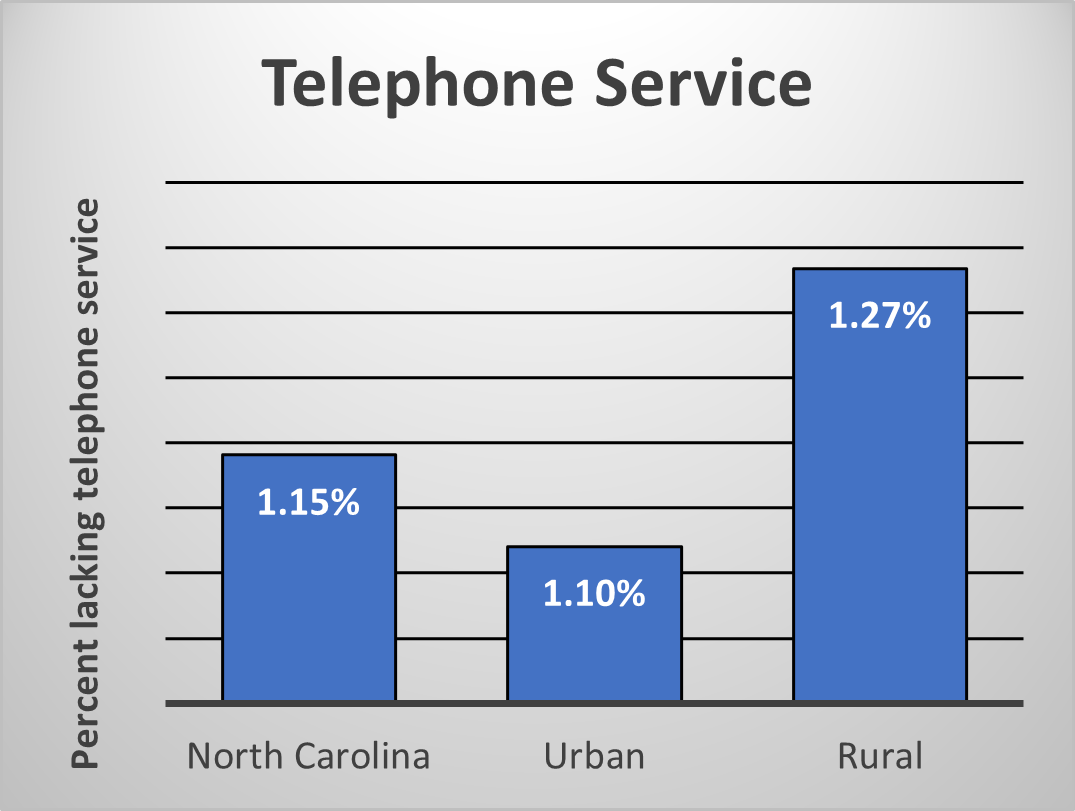
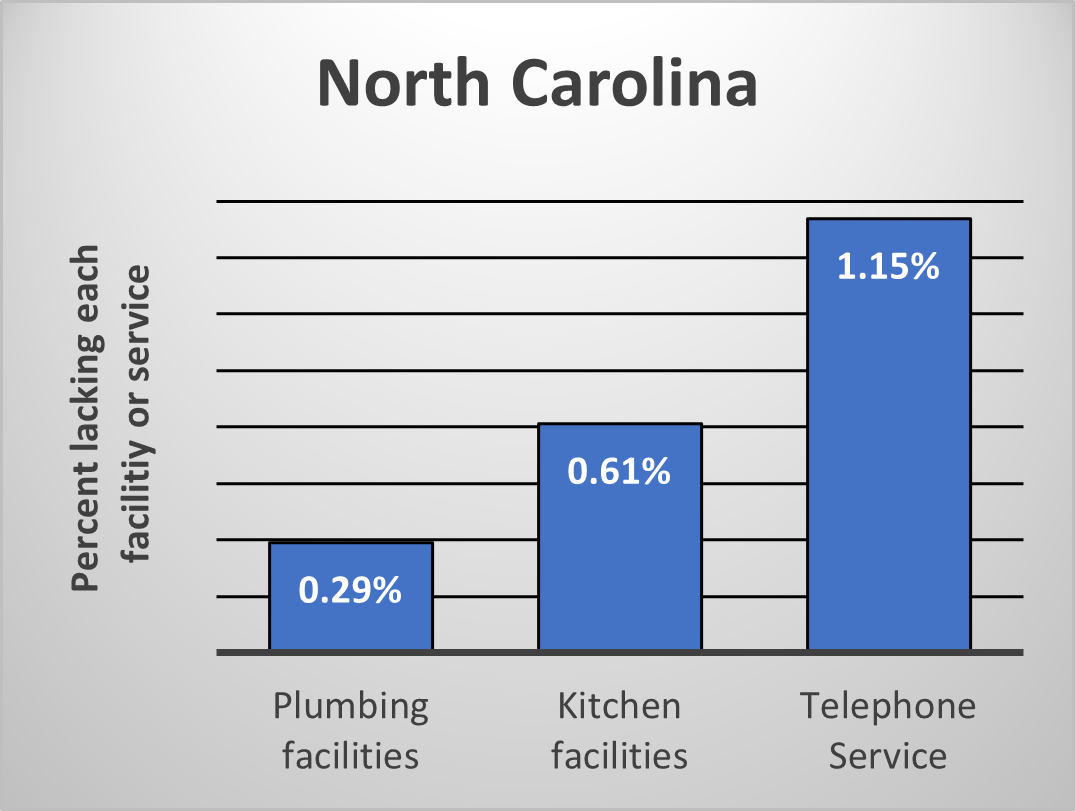
Not only are some North Carolinians living without adequate plumbing, kitchens or telephone service, these shortcomings are restricting available housing stock. About 14% of unoccupied housing units lack complete plumbing facilities and about 15% lack complete kitchen facilities. These vacant homes in need of rehabilitation and repair present potential opportunities to provide necessary additions to the viable housing inventory.
In addition to providing programs that help renters as well as current and future homeowners afford quality housing, the NC Housing Finance Agency finances urgent and major repairs through local governments and nonprofits for low-income homeowners. The Agency recently awarded more than $11 million for the rehabilitation of existing low-income, owner-occupied homes and $8.8 million for emergency repairs for very low-income households. In 2022, the Agency assisted 850 low-income homeowners with critical home repairs. To date, these rehabilitation programs have helped rehabilitate or preserve more than 38,000 affordable homes and apartments that span across all 100 North Carolina counties.
[i] See, e.g., Quality of Housing, U.S. Dept. of Health and Human Services, Link. Health Indicator 9: Severe Housing Problems, North Carolina Institute of Medicine, Link.
[ii] U.S. Census Bureau, 2017-2021 American Community Survey 5-Year Estimates, Table DP04.
[iii] The U.S. Census Bureau defines a household as having complete kitchen facilities when it has all of the following: (1) a sink with a faucet, (2) a stove or range, and (3) a refrigerator. A household is defined as having complete plumbing facilities when it has both (1) hot and cold running water and (2) a bathtub or shower. A household is defined as having telephone service if the household has a landline telephone or if any household member has a working cell phone. ACS and PRCS 2021 Subject Definitions, pgs. 24, 29, 39.
[iv] U.S. Census Bureau, 2017-2021 American Community Survey 5-Year Estimates, Table CP04. During the period of comparison, the Census Bureau changed the question and definition regarding telephone service and, thus, these data are not readily comparable.
[v] U.S. Census Bureau, 2017-2021 American Community Survey 5-Year Estimates, Table B25049.
[vi] U.S. Census Bureau, 2017-2021 American Community Survey 5-Year Estimates, Table B25043.
[vii] U.S. Census Bureau, 2017-2021 American Community Survey 5-Year Estimates, Tables B25053 & B25049.
[viii] U.S. Census Bureau, 2017-2021 American Community Survey 5-Year Estimates, Table DP04.